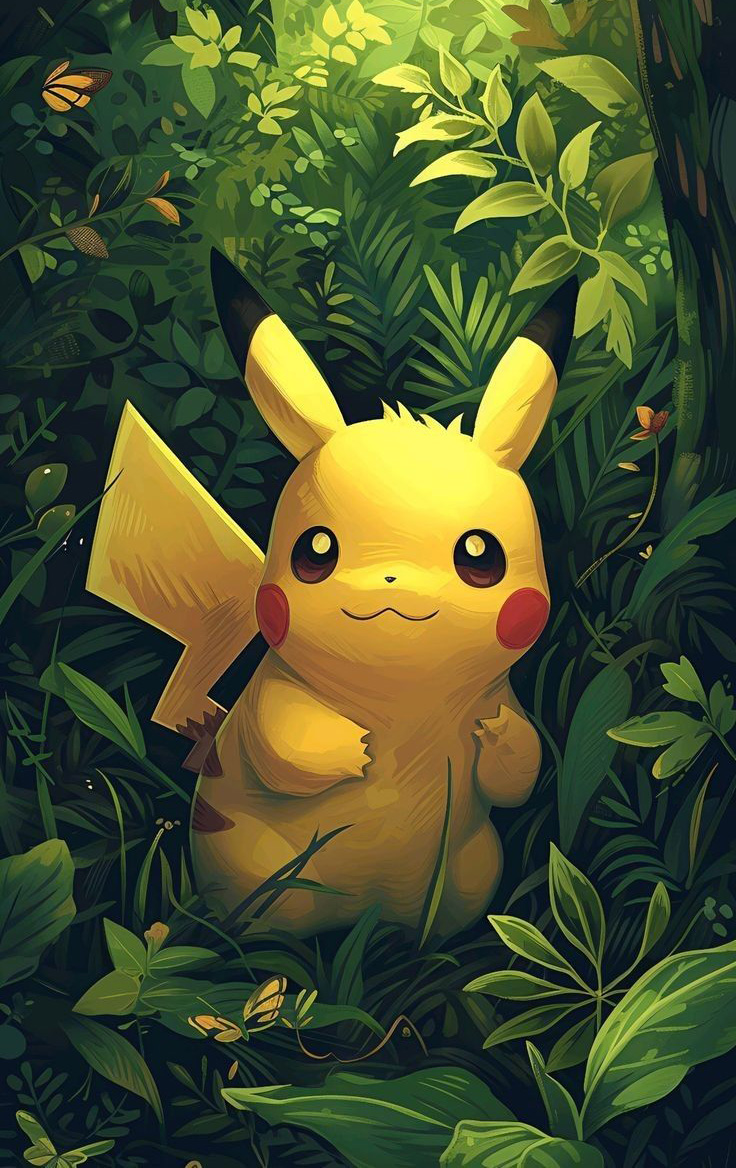
Pokemon is a term for "Pocket Monsters." Invented by Satoshi Tajiri and Ken Sugimori and launched by Nintendo in 1996, it is a series centered around imaginary creatures known as Pokemon that humans, and "Pokemon Trainers," will capture, raise, and battle for their lives. Each Pokemon has special skills, types, and features that vary them from others. Apart from the games , there are major video games, trading card games, anime series, films, and collectibles. The series of Pokemon features themes that are friendship and rivalry as players try to catch various Pokemon to be at the top.
Satoshi Tajiri, who had wanted to bring back for gamers the fun of collecting creatures, a hobby he was fond of playing as a child. Two first games, "Pokemon Red" and "Green," were released in Japan in 1996, presenting turn-based battles and the possibility of trading Pokemon using the link cable. Over the years, the franchise has grown, adding hundreds of new Pokemon and using new technology, like mobile games such as "Pokemon GO," which have attracted fans of all ages .
Pokemon" is a term derived from the Japanese name "Pocket Monsters." The term explains the concept of catching and training mini creatures. Pocket in Japanese refers to the actual pocket area where such animals can be kept, while monsters is a term used to refer to the different magical creatures you'd come across throughout your games.
Creature Collection: There are more than 900 Pokemon, and each one has different designs, different stories, and even different features. It makes the players find and collect as many as they can. Players catch Pokemon by using pokeballs. Catching some might be a bit hard, depending on its level, condition, and rarity.
Types and Abilities: There are eighteen different types: fire, water, electric, and psychic. Each has its own strengths and weaknesses. Every Pokemon has a passive feature—a passive immunity to certain attacks.
Turn-Based Gameplay: In turn-based gameplay, a player can even assign different moves for his Pokemon. Among these strategies, the three significant focuses are on move selection, status effects, and type matchups. Almost every Pokemon suffers from conditions like burn, sleeplessness, and paralysis, which makes the battle interesting and draws in lots of planned thought.
Evolutions: Pokemon can develop in a bunch of ways, with leveling up being the most common. Other methods include using evolution stones, trading with friends, or hitting certain conditions like friendship levels. Evolution results in a change in its look, better statistics, and access to different moves, which makes it super important for gameplay.
Pokedex: The Pokedex acts like a digital book that keeps track of all the Pokemon you discover and catch. A major part of the game is completing it, which inspires players to go out and explore as well as trade with friends. You’ll notice that some Pokemon can change depending on the region they come from, so they might look different, have various types, and even have special abilities. This makes the fun of collecting them all even better.
Exploration: Every Pokemon game is set in a special made-up region that is inspired by real-world locations. These regions have their own unique landscapes, weather, and cultures. As players explore, they discover hidden items, rare Pokemon, and cool secrets.
Battling and Trading: Trading lets players swap Pokemon with friends, helping them finish their Pokedex and get Pokemon not found in their game version. Players can battle each other using their trained Pokemon, which results in competitive gameplay in organized tournaments, both in the game and at events such as Pokemon Championships.
Characters and Plot: Each game has a plot that revolves around the quest to become the Pokemon Champion by battling the gym leaders and fighting against the main villain. During this quest, the players have loads of unforgettable characters, such as rivals, professors, and team leaders, all of which improve both the story and the world of the game.
Multimedia Integration: The Pokemon anime brings the franchise to a wide audience, showing Ash Ketchum's journeys and many movies that boost the story and characters. The Pokemon Trading Card Game allows for another different way of playing in the Pokemon world, focusing deck-building and strategy in a collectible format. Moreover, it has really created a large range of markets, from toys and clothing to collectibles, and organized events such as Pokemon GO Fest to unite fans.
Side Activities: Games usually have mini-games, such as Pokemon contests, breeding, or other side quests. These provide some break time from the main story line and tend to vary gameplay.
Entertainment: It started as a video game but soon developed into anime, movies, trading cards, and merchandise. Now it is enjoyed in many cultures by all ages; families bond over the show and play the game together, building connections that go beyond generations.
Cultural Exchange: With the spread of Pokemon across the world, it brought elements of Japanese culture, such as anime and manga, to other parts of the world. It increases interest in the Japanese language, customs, and more that define its culture.
Education and Learning: Pokemon has developed to become an entertaining teaching device. Through the games and the mechanics of the trading card, many children are being taught strategy and teamwork, sometimes the basics of math.
Economic Impact: It has created much economic activity around the games, trade, and other related events. The most visible is in the growth of gaming cafes, Pokemon-themed events, and tourism towards places featured in the game. It directly contributes to the economy at local levels and offers jobs in multiple sectors.
Environmental Awareness. Some Pokemon in the present games say to preserve and protect nature and the environment. This has been a debate among the fans about nature and sustainability and has brought them to think about how to treat their environment.

